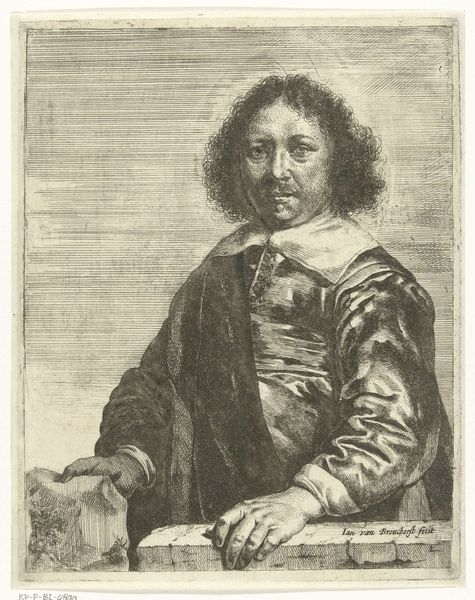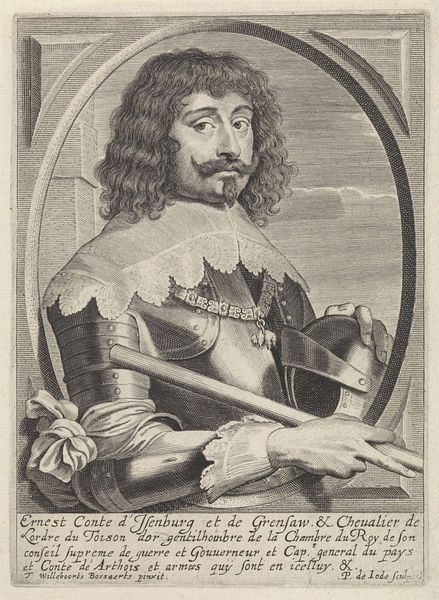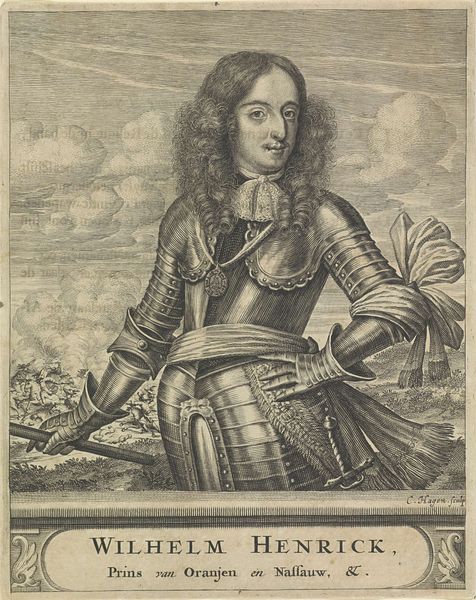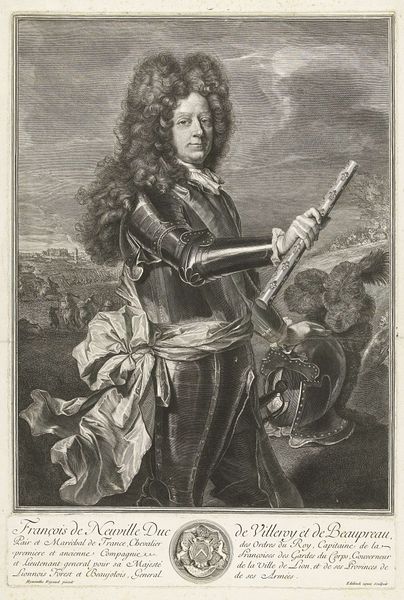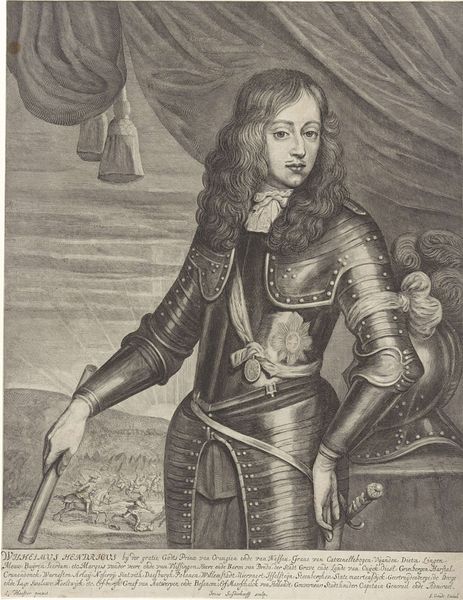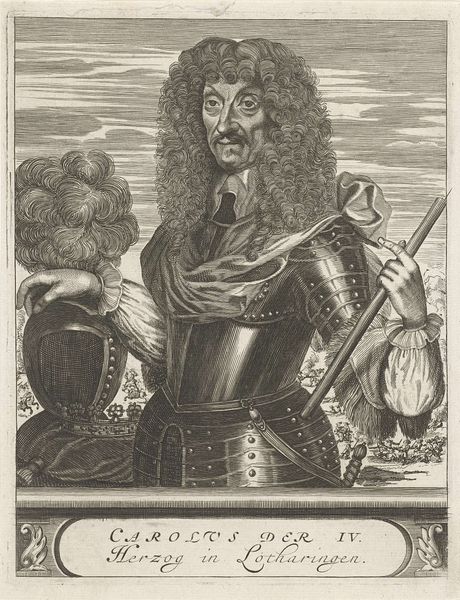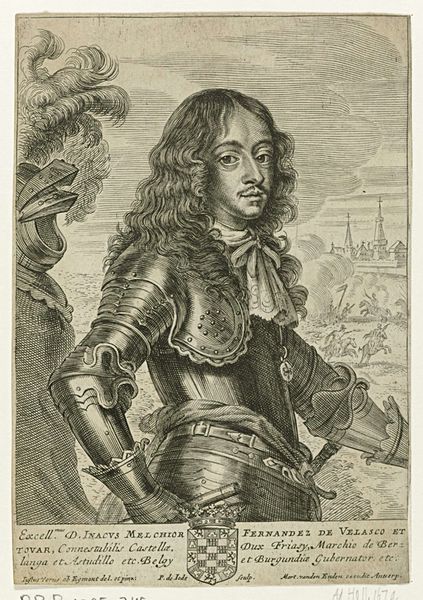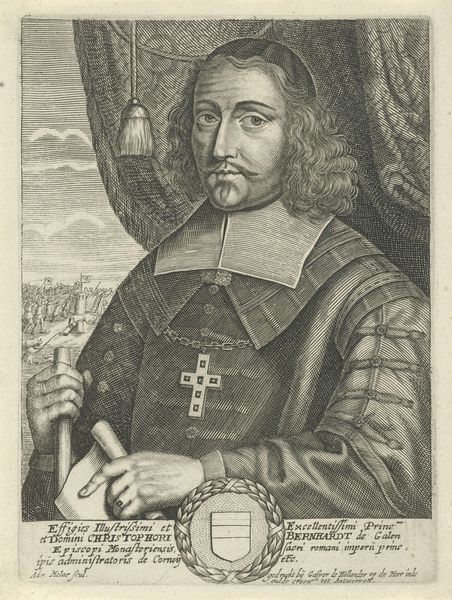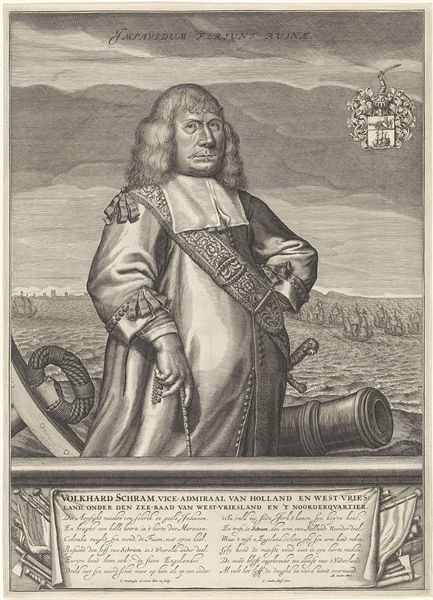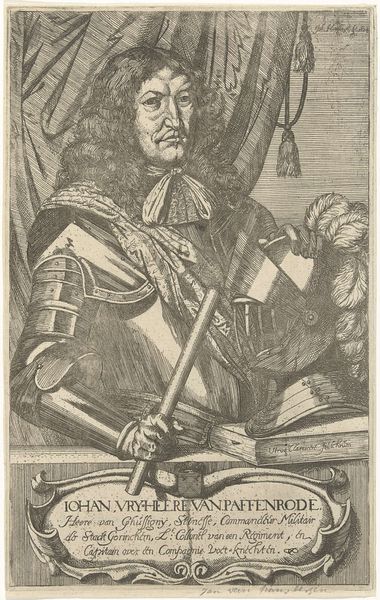
print, engraving
#
portrait
#
baroque
# print
#
old engraving style
#
caricature
#
history-painting
#
engraving
Dimensions: height 177 mm, width 136 mm
Copyright: Rijks Museum: Open Domain
Editor: Here we have "Portret van Karel Gustaaf, koning van Zweden," or "Portrait of Carl Gustav, King of Sweden," a print from sometime between 1635 and 1695. It looks incredibly detailed, almost photorealistic, for an engraving of the time. What strikes you about this piece? Curator: Formally, the work is a compelling example of Baroque portraiture rendered through engraving. The intricate lines and tonal gradations create a surprisingly illusionistic effect. Observe how the artist uses hatching and cross-hatching to define the contours of the King’s face, the folds of his sash, and the metallic sheen of his armor. Editor: Yes, the rendering of textures is impressive. Curator: Indeed. Note also how the composition relies on a series of contrasting shapes and forms, from the King’s flowing hair to the rigid lines of his garment and armor. How does the artist manipulate light and shadow to achieve depth and volume? Editor: Well, the light seems to highlight the king’s face and the scepter in his hand, drawing our attention there. It creates a strong contrast with the darker areas of the armor and the background. Curator: Precisely. This play of light and shadow not only defines the forms but also contributes to the overall dramatic effect characteristic of the Baroque style. The very controlled gradation and hatching provide that effect. Do you notice any deviations or perhaps areas where the formal construction seems less convincing? Editor: I wonder about the scale and proportions. The face appears somewhat flat despite all that hatching, and maybe the figure isn't quite balanced in relation to the background elements. Curator: An astute observation. These subtle ambiguities may derive from the constraints of the engraving technique, where capturing precise anatomical detail can be challenging. Despite those ambiguities, what this work expresses, formally, is the ability of Baroque visual strategies to create compelling drama even in reproduction. Editor: It's fascinating how a print can possess such presence, even now. Curator: A potent reminder of how much can be achieved with the tools of art itself.
Comments
No comments
Be the first to comment and join the conversation on the ultimate creative platform.
